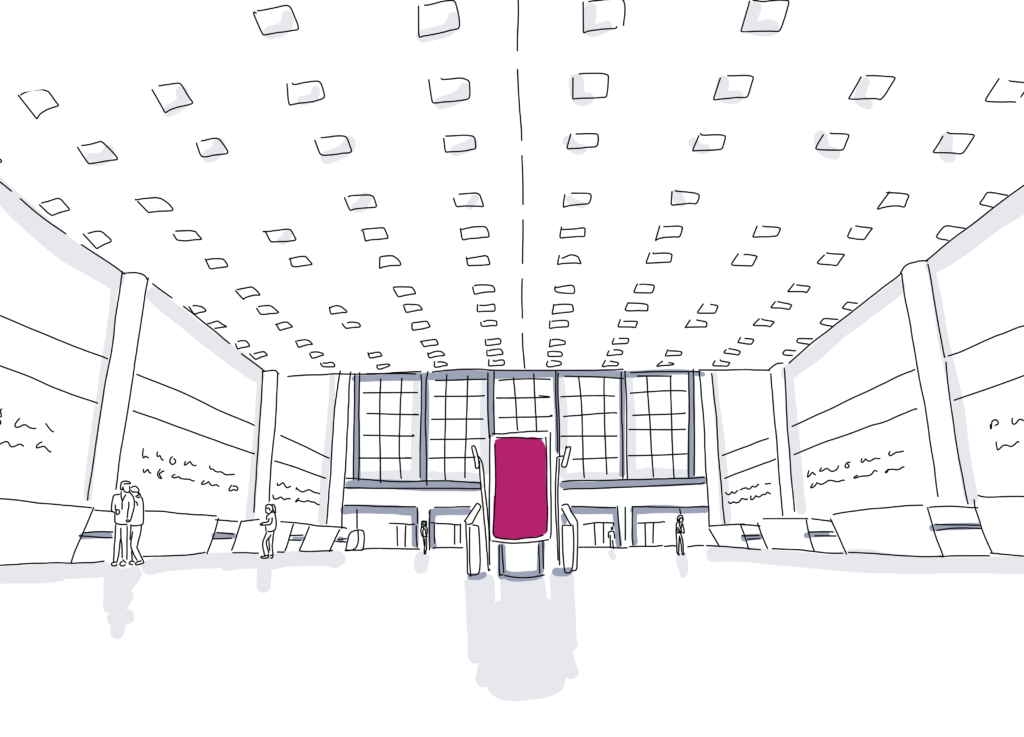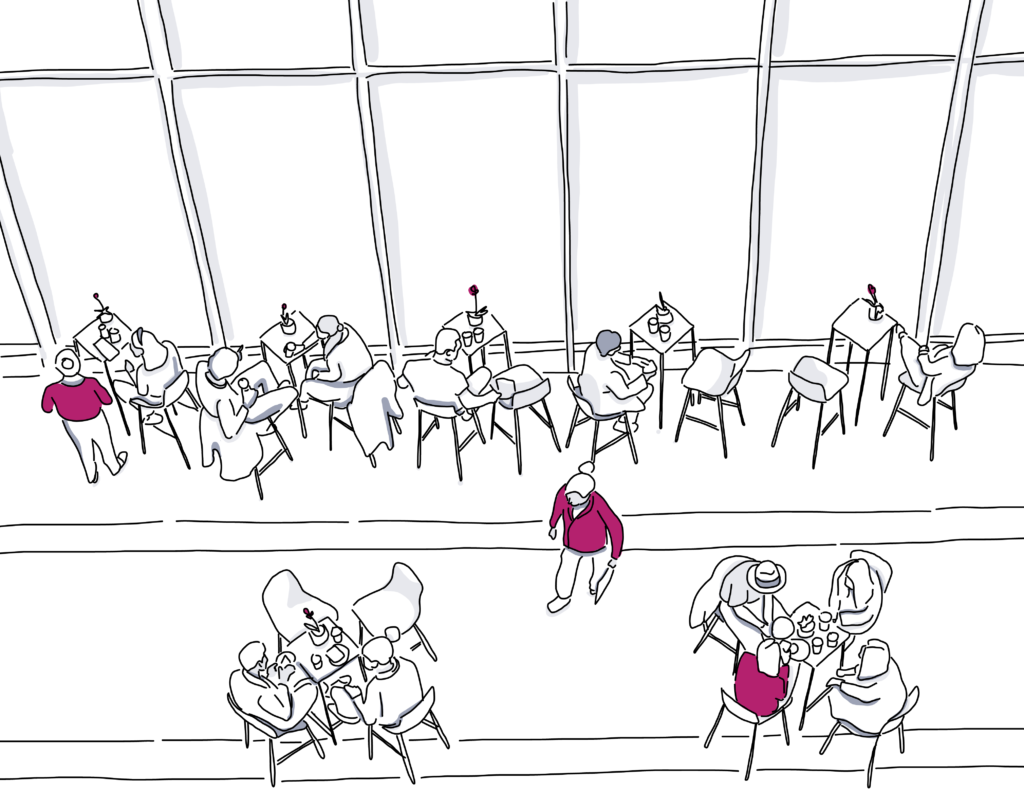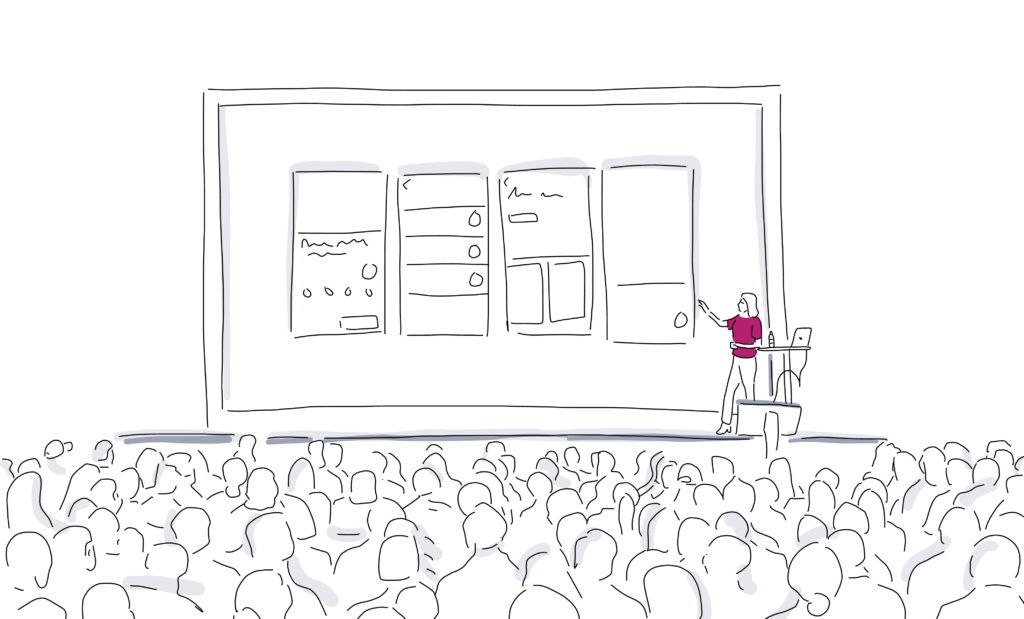

Successful conferences come in all flavors and sizes: The multi-day national seminar for fitness professionals, the one-day conference for regional business leaders under 40. But successful conferences all have one thing in common: a planner somewhere who planned early and often for success.
The event pros who hold the most successful conferences are always on the lookout for tips and tricks to polish their strategies and tackle their to-dos. If you’re looking for ways to improve your process, maximize the effectiveness of your conference, save yourself some headaches, and make you sure have all the bases covered, use these 8 foolproof conference planning tips. And for a quick guide to conference planning, we wrap it up with a helpful conference planning checklist!

Alternative venues can lend unexpected flair to a conference. Locations like museums, historical sites, theaters, libraries, and sports arenas have all hosted conferences. But consider the needs of your group: A venue should set the stage for the conference to do its work, not steal the show. Make sure are comfortably sized spaces for the big group seminars or breakout sessions your group requires, that there are adequate restrooms for the event size, catering meets special dietary needs, and that the venue is ADA compliant.
Hotels and conference centers are purpose-built to meet these needs and allow people to concentrate on the content of the proceedings, so don’t discount these traditional venues. Conferences that draw out-of-town attendees are particularly well-served by the convenience of hotel accommodations, group pricing, and the enhanced networking opportunities of having everyone in one place.
Get Started Free
Get your conference name badges ready: Networking is a top reason people attend conferences. And in a job search, face-to-face networking is several times more effective than networking online. These events allow people to talk and build connections with those who share their career interests or personal passions”facilitate their success.
If you are using or developing a conference app, think about ways the app itself can support networking:
Be sure to provide good old-fashioned offline opportunities as well. There’s always the sponsored social mixer, but you can also brainstorm ways to dovetail with other wellness trends: yoga, outdoor activity, healthy cooking. Design opportunities that include introverts in networking, too, and see an event-satisfaction bump from up to half of your attendees.
If attendees are coming to your conference to deepen their knowledge, follow a clear plan to source your content.
First, if possible, poll your audience about topics, sub-topics, and depth of subject matter knowledge. This might seem like a Catch-22: If you’re drawing an audience with your content, how will you have an audience to poll before you have content? Don’t worry; there are some workarounds: If this is a recurring event, get in touch with previous attendees. Set up an event Facebook group, which offers a straightforward polling feature. And if all else fails, poll a selection of people likely to come, or whose career/interest demographics put them squarely within your target audience.
If polling isn’t an option, talk with stakeholders in your company or your client’s company. The business development and marketing teams should be up-to-date on subject matter issues and trends currently drawing the most interest.
With these insights in hand, recruit and confirm relevant speakers. After your core speakers are confirmed, check your original plan against the lineup. If there are missing topics (e.g., a pet dog training seminar with no one addressing the latest techniques in addressing separation anxiety) reach out to experts in that niche arena and fill in the gaps.
Your conference website is the trunk of your marketing tree”it’s easy to spot, supports the entire event, and helps people find what they need.
The event website must be optimized for search engines so people will find it online. Think about what attendees might search for when looking for a conference related to their interests or industry”those are your main keywords. (As it gains traction, your conference name will be a keyword itself.) Include your conference name and other keywords in your page titles and throughout your content. Have a logical structure that lets visitors easily find your ˜About’ page, the conference agenda, registration information, a link to tickets, and other important information.
Social platforms, email marketing campaigns, and pay-per-click strategies are the branches and leaves of your marketing tree. Reach your audience on the social platforms that make the most sense for their demographics and your event. (Professional event? LinkedIn is a shoo-in. Young professionals? Try Twitter.) Check out the general tips on putting together a comprehensive social media strategy for an event.
Headaches will arise, there’s no getting around that. But look out for these common trouble spots:

Get out that conference planning timeline again, and schedule several times for a metaphorical walkthrough of the conference from the point of view of:
Look for pain points and problems, and also for ways to improve the experience for each group. Maybe you’ll find that attendees in certain sessions don’t have much time to go to the bathroom between sessions on the first day, so you shave a few minutes off each session. Maybe volunteers who arrive on the second day don’t have a coordinator to deliver their assignments. Or perhaps you’ll realize you have the time to schedule a short networking meetup for the event speakers”a great way to show your appreciation and show them you value their participation.
No matter how experienced you are, this step almost always uncovers opportunities to make your conference better!
According to IACC, increasing attendee engagement is still a meeting planner’s #1 priority. The more engaged they are with the app, the stronger the benefits. A conference app delivers all the benefits of traditional paper-based conference information, while achieving three essential goals:
To elevate engagement before the conference even starts, encourage attendees to use the app for schedule planning: Include an easy-to-use calendar feature that makes all the necessary info readily accessible. Give people a way to find detailed agenda information, speaker bios, and even a way to submit questions to speakers.
Once the conference starts, attendees should be familiar with using the app. Keep them engaged with content such as speaker slides and networking opportunities. You might even present the chance to fill out speaker evaluations in-app at the end of each session, with respondents entered for a prize drawing right there at the conference.
Want to grow along with the latest trends in participatory meetings? Check out books making a big splash in the space. They cover the ins and outs of meeting design in depth. Start with Into the Heart of Meetings by Mike van der Vijver and Eric de Groot, or The Power of Participation: Creating Conferences that Deliver Learning, Connection, Engagement, and Action by Adrian Segar.
If books are your bag, check out our other top recommendations for books that help event planners level up.
Get Started Free
To stay on track with the basics, follow this 11-step conference planning checklist (with links if you need to brush up on your skills in a particular area):

Now you’re ready to design an exciting and smooth-running conference that wows your clients!
Don’t forget that this year’s fantastic conference is an excellent opportunity to improve the next one! After the conference, use that post-event feedback in the ways you determined pre-event. And find out how to increase your event budget with tips from our event budget ebook.